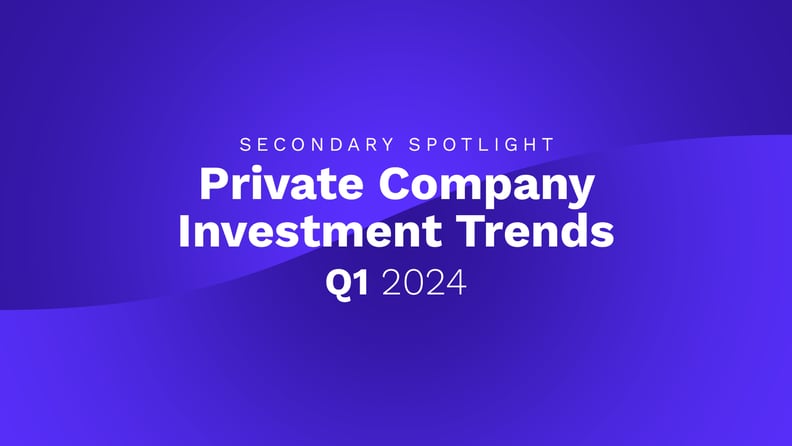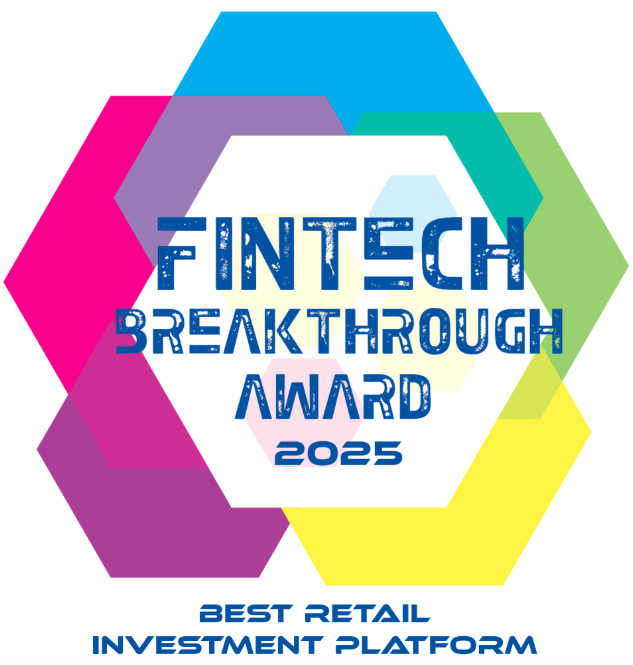The third quarter of 2025 marked a notable shift in the private markets. Fueled by public market momentum and historically low volatility, a risk-on investor sentiment rippled into the market. As a flurry of high-profile IPOs re-energized the landscape and ended a multi-year “exit-drought”, investor focus sharpened towards growth. This report unpacks the trends that defined the private markets in Q3, from the AI fundraising frenzy to the resurgence of demand for up-and-coming innovators.
Positive market sentiment encouraged continued IPO activity, making 2025 the most active year for IPOs since 2021. Several venture-backed technology companies went public in 2025 including market leaders like Klarna and Stubhub. Figma led the Q3 IPO cohort, trading up 250% on its first day of trading. Together, the 13 venture backed companies that went public in the U.S. have generated $36.4 billion in exit value, a year-over-year change of 2,861%.1 Meanwhile, the pipeline continues to grow, despite the government shutdown. Companies can still proceed with roadshows, potentially allowing companies like Navan, Wealthfront and BitGo2 to make progress towards their planned IPOs later this year.
Beyond IPOs, global exit volume has totaled $360 billion year-to-date3, marking a notable increase versus the past several years. Acquisitions were the most popular exit avenue, followed by buy-outs and public listings. However, public listings led in exit deal value as large, high profile names like CoreWeave and Circle made their public debuts.
While exits have picked up, overall VC deal activity for 2025 is pacing slightly behind 2024.4 Despite a slight deceleration, Q3 showed the consolidation of capital into elite, category-defining companies. The AI sector was the epicenter of this trend, with Anthropic, xAI, and Mistral AI alone collectively raising over $24.5 billion in new funding. Beyond the AI boom, market titans solidified their dominance, as both Stripe and Databricks joined the exclusive "centicorn" club with valuations soaring past the $100 billion mark. This suggests that while VCs may be becoming more selective, the competition to fund top-tier innovators has never been more intense.
Investors Double Down
So what happened in the private secondary market? A year-over-year slowdown in VC deal activity did nothing to quell activity. Deal volume on EquityZen’s platform almost doubled from the first half of 2024 to the first half of 20255, marking growing demand from investors for growth and innovation. Our research shows that the vast majority of the wealth creation for the 2025 IPO class happened before they ever rang the opening bell. Therefore, as IPO optimism increases and the demand for all things AI continues, private secondaries are becoming the main stage for more investors to access the next wave of tech leaders.
The SaaS-y Comeback
For the past two years, artificial intelligence, information technology and fintech have remained the most popular industries amongst EquityZen investors. With AI-enthusiasm showing no signs of slowing down, big tech companies are aggressively forging partnerships with private AI innovators. In Q3 alone, tech leaders from NVIDIA to Microsoft forged strategic relationships with AI startups like PsiQuantum, Replit and OpenAI, solidifying these private companies as strategic players within the broader tech landscape.
Not only were AI, information technology and fintech companies the most in demand, but they were also the most actively traded in Q3. Those 3 industries saw nearly the same number of trades in Q3, far outpacing other industries.
Beyond these industries, EquityZen saw an uptick in demand for software-as-a-service (SaaS) companies. As the lines blur between traditional software and AI-native enterprise tools, the SaaS landscape is rapidly evolving. AI-native SaaS companies like Anthropic, Cursor, Glean, and Perplexity are scaling to $100m+ in annual recurring revenue (ARR) much more rapidly6 with a modest headcount, and garnering staggering valuations in the process. Notably, our data shows that investor interest isn’t solely concentrated in AI-native SaaS companies. Established SaaS companies that have adopted AI into their products and processes like Tanium, Addepar, and Reltio garnered strong demand as well. This trend played out in the primary markets as well. Global SaaS companies closed over 6,000 VC deals, the second largest number of deals of any industry after AI.7
The robotics industry gained significant momentum in Q3, fueled by high-profile capital raises that sparked broader investor enthusiasm. Companies like FIgure Robotics and 1X made the news for raising funding rounds in Q3, drawing attention to the industry at large. On EquityZen’s platform, strong investor interest in companies like Agility Robotics and Gecko Robotics drove industry popularity.
The Most Popular Companies
As we zoom in to the individual company level, the most popular companies evolved from last quarter. Crypto leader Kraken shot up to #2 on the list along with Ripple, Cerebras, PsiQuantum and Anthropic who were all new entrants to the top 10. While many of the most popular companies are AI or AI-adjacent, space travel and crypto also showed strength.8

With the evolution of new technology, innovative companies continue to shake up the markets in which they operate. From AI-native recruiting platforms (Mercor) and driving software (Wayve) to autonomous factories (Hadrian) and CRISPR technology (Mammoth Biosciences), a new cohort of companies grew in popularity over the quarter. A healthy mix of industries amongst these companies shows that while AI demand continues to dominate the market, it isn’t the only industry driving investor interest.
Discerning Discounts
The steady climb in premium deals seen through 2024 and into early 2025 signaled a return of investor confidence and the establishment of a valuation floor after the deep discounts of 2023. After two quarters of more deals at premiums, Q3 deals showed a slight pullback, with only 14% of deals closing at a premium, as noted in the chart above. The longer term trend suggests that while the worst of the correction is over, the market remains more disciplined. While the strongest companies are successfully growing into larger valuations and can once again command premiums, the vast majority still trade below their last primary round.
Given these trends, the average company traded at a 29% discount to its last round of funding in Q3. This marks a return towards the more “normal” discounts seen from late 2024 into early 2025. While this suggests that there may be some deals in the market, it represents a clear price rebound from the lows of 2023 and early 2024 are still apparent. Historically, secondary transactions tend to trade at discounts to primary funding rounds given the opacity of information and potential liquidation differences between common and preferred stock.
Increasing Industrials Valuations
The divergence in private market valuations becomes stark when viewed by industry. Industrial companies were a standout performer in Q3, with nearly half of all transactions closing at a premium. This trend was powered by high-flyers like Redwood Materials. On the other end of the spectrum, the Food & Beverage sector continued its multi-quarter pattern of valuation pressure, with every transaction in Q3 closing at a discount to its last funding round.
So what drives premiums? Secondary valuations are typically pushed above a company’s last primary funding round by two key forces. The first is a “stale valuation,” where a company's significant growth outpaces a dated funding round, as seen with Redwood Materials, which last raised capital in 2023. The second is simply strong investor demand. This creates intense competition for shares in the most sought-after sectors like artificial intelligence, fintech, and industrials, effectively bidding prices above a company’s last official benchmark.
Up and Comers Gain Traction
In a world where the headlines go to the centacorns like OpenAI and SpaceX, we’re seeing a differentiated trend: growing demand for innovative, up and coming companies that may have more room for valuation growth. Trades in companies valued at less than $10 billion as a percent of overall transactions grew at the cost of transactions in more highly valued companies. Trades in companies valued at less than $5 billion returned to levels we hadn’t seen since 2023. Meanwhile, trades in companies valued from $10 to $20 billion saw a sharp decrease versus historic norms.
When we shift the lens from valuation to age, demand for younger companies continued to grow in Q3. Younger (less than 5 years old) and middle-aged (between 5 and 10 years old) garnered a greater percent of overall investor interest than in recent quarters, as shown in the chart above. We haven’t seen that level of interest in young companies since 2018.
As AI demand remains dominant, the private technology market is increasingly characterized by extreme velocity. Rising AI startups are securing significant funding and achieving unicorn status in unprecedented timelines. This furious pace of development, combined with AI's industry-transforming potential, has kept investors focused on accessing these rapidly scaling, yet still young, private companies before they become household names.
Conclusion
The market in Q3 is moving faster than ever, driven by constant innovation. While a handful of AI "centicorns" command sky-high valuations and reshape entire industries, our data reveals a more complex reality. Savvy investors are looking past the headlines, driving a surge in demand for younger, relatively smaller-cap companies across industries. This divergence between the titans and the rising stars underscores a new reality: navigating the pre-IPO landscape now requires a deeper understanding of nascent technologies and market trends. As demand for private market investments grows - from 401(k)s to brokerage accounts - access to both data and unique opportunities becomes all the more important.
Curious to learn more about the fast-growing companies in the pre-IPO market? Start exploring today.
Disclosure
Not all pre-IPO companies will go public or be acquired, and not all IPOs or acquisitions are or will become successful investments. There are inherent risks in pre-IPO investments, including the risk of loss of the entire investment, illiquidity, and fluctuations in value and returns. Investors must be able to afford the loss of their entire investment. Forward-looking statements are not guarantees of future results.
Footnotes
- Pitchbook, September 2025 https://pitchbook.com/news/articles/ipos-and-some-vc-liquidity-finally-arrived-in-q3
- S-1 Filings: Navan, Wealthfront, BitGo
- Pitchbook, Global VC First Look https://pitchbook.com/news/reports/q3-2025-global-vc-first-look?utm_medium=newsletter&utm_source=daily_pitch&utm_campaign=vc_market_update&utm_content=q3_2025_global_vc_first_look&utm_term=&sourceType=NEWSLETTER
- Pitchbook, Global VC First Look https://pitchbook.com/news/reports/q3-2025-global-vc-first-look?utm_medium=newsletter&utm_source=daily_pitch&utm_campaign=vc_market_update&utm_content=q3_2025_global_vc_first_look&utm_term=&sourceType=NEWSLETTER
- EquityZen data as of October 2025
- Iconiq, State of Software 2025 https://cdn.prod.website-files.com/65d0d38fc4ec8ce8a8921654/68c7ed47d6693ad3318add83_ICONIQ%20Analytics%20-%20State%20of%20Software%202025%20(1).pdf
- Pitchbook, Global VC First Look https://pitchbook.com/news/reports/q3-2025-global-vc-first-look?utm_medium=newsletter&utm_source=daily_pitch&utm_campaign=vc_market_update&utm_content=q3_2025_global_vc_first_look&utm_term=&sourceType=NEWSLETTER
- EquityZen data as of October 1, 2025


-1.png?width=812&height=446&name=Q1%20(1)-1.png)




